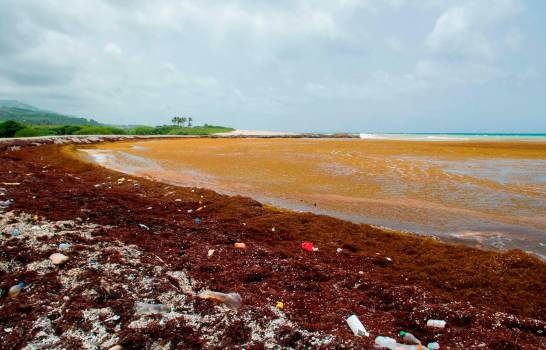
The news that another wave of sargassum is coming to Dominican shores has been in the news. However, Diario Libre ecology writer Marvin Del Cid says the waves of seaweed may bring much goods. He reports on research in the journal Environmental Science and Pollution Research on how the Sargasso Sea (located in the mid-Atlantic) retained around 19.3 million tons of CO2, an amount equal to the contamination emitted by Mexico City in a whole year. The research, led by Daniel Lardizabal Gutierrez from the Center for Research in Advanced Materials (Cimav) in Spain, found that the seaweed, just like mangroves, and marine grasses, captures huge amounts of CO2.
The sargassum retains the gas in three manners. The first is through photosynthesis. The second is indirectly, by means of the fauna that travels with the sargassum. This macroalgae, coming from Africa, and traveling towards America, houses a great number of marine bristle worms and mollusks that absorb CO2 on order to form their shells. The third manner, as Lardizabal and his team report, is the absorption of CO2 for the internal production of calcium carbonate to form calcite, which helps to retain gases. According to the research team, “calcite is one of the best ways to retain CO2 and maintain the equilibrium of this gas in the atmosphere. The difference between this process and photosynthesis is that this CO2 does not enter the carbon cycle and, long term, will become sedentary rock.”
Read more:
Springer
Science Direct
Diario Libre
1 June 2020

